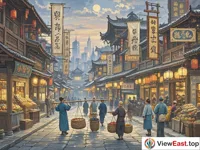
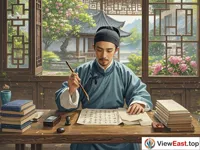
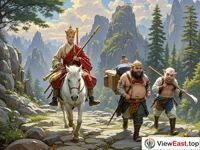
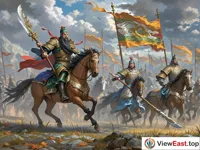
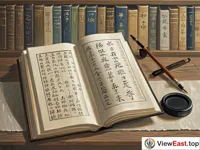

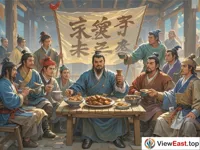
The Ming and Qing dynasties marked a new peak in the art of narrative in Chinese literature, where the narrative tradition of Han Chinese culture was fully displayed and developed in the form of novels. With their rich themes, vivid plots, and profound ideological content, Ming and Qing novels not only reflected the social life of the time but also demonstrated the profound heritage of Han Chinese culture.
Historical Background and Cultural Value
The Ming and Qing periods were the late feudal society in Chinese history, with significant development in social economy and culture. The prosperity of urban commerce provided conditions for the creation and dissemination of novels, which gradually became a popular literary form among people from all walks of life. Ming and Qing novels, with their grand narrative frameworks and delicate psychological portrayals, showcase the complexity and diversity of Han Chinese culture.
Literary Achievements of the Four Great Classical Novels
The most famous novels from the Ming and Qing periods are the Four Great Classical Novels: "Dream of the Red Chamber," "Journey to the West," "Romance of the Three Kingdoms," and "Water Margin." These works have not only achieved outstanding success in literature but also have profound implications in thought and culture.
《Dream of the Red Chamber》: With its profound psychological depiction and criticism of feudal ethics, it showcases the author Cao Xueqin's deep insight into human nature and society.
《Journey to the West》: Wu Cheng'en uses mythological stories to tell the fantastic journey of Tang Seng's quest for sacred texts, full of profound implications and imagination.
《Romance of the Three Kingdoms》: Luo Guanzhong depicts the heroes and wars of the Three Kingdoms period, showing a contest of strategy and wisdom.
《Water Margin》: Shi Nai'an portrays the rebellion and struggle of the heroes of Liangshan, reflecting a critique of social injustice.
Reflection of Han Chinese Cultural Elegance
Ming and Qing novels are a concentrated reflection of the elegance of Han Chinese culture, demonstrating the profound connotation of Han Chinese culture through their unique narrative art.
Narrative Structure: Ming and Qing novels adopted a chapter-based structure, with each chapter having an independent title and complete story while being interconnected, forming a unified artistic whole.
Character Development: The characters in the novels are rich and distinctive, whether they are heroes or ordinary people, they are vividly portrayed.
Language Art: The language of the novels is vivid and imaginative, with both the conciseness of classical Chinese and the accessibility of vernacular Chinese, fully reflecting the charm of the Chinese language.
Far-reaching Influence
Ming and Qing novels have had a profound influence on subsequent literary creation. They have not only enriched the treasury of Chinese literature but also positively affected the development of world literature. These works, with their unique artistic charm, have become classics in the history of Chinese and world literature.
Conclusion
As the peak of narrative art in Han Chinese culture, Ming and Qing novels not only showcase the social features of the time but also reflect the profound heritage and unique charm of Han Chinese culture. These works, with their profound ideological content and exquisite artistic skills, have become a precious asset in the history of Chinese literary history.